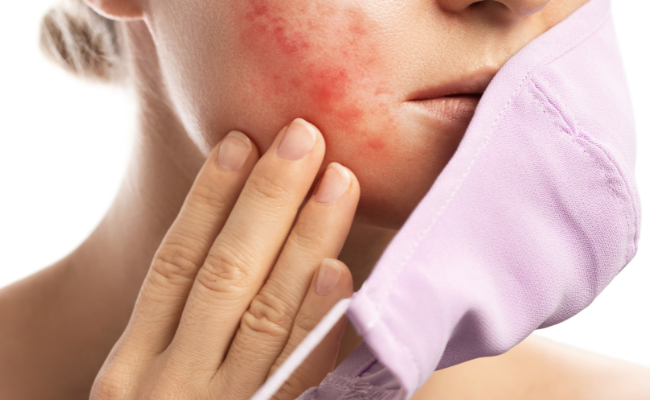How to Treat Erythema Nodosum?
- February 15, 2024
- No Comments

What is Erythema Nodosum?
Erythema nodosum is a painful disorder characterized by tender bumps, or nodules, under the skin. It's an inflammatory condition, and while the exact cause is often unknown, it can sometimes be triggered by infections like strep throat. The symptoms include flat, firm, hot, red, and painful lumps that typically appear on the shins. As time passes, these lumps may change in appearance, resembling bruises, before eventually resolving on their own. Alongside the nodules, individuals may experience symptoms such as fever, fatigue, joint pain, and inflammation.
Why Does Erythema Nodosum Occur?
The exact cause of erythema nodosum is not always clear, but it is often associated with an underlying inflammatory condition or infection. Common triggers include:
- Bacterial or viral infections, such as streptococcal infections, tuberculosis, or infectious mononucleosis.
- Autoimmune disorders like sarcoidosis, inflammatory bowel disease (such as Crohn's disease or ulcerative colitis), or Behçet's disease.
- Certain medications, such as birth control pills, antibiotics (particularly sulfonamides), and nonsteroidal anti-inflammatory drugs (NSAIDs).
- Pregnancy, which can sometimes trigger erythema nodosum due to hormonal changes.
How to Treat Erythema Nodosum?
Treatment for erythema nodosum typically focuses on managing the underlying cause and relieving symptoms. Here are some common treatment approaches:
- Addressing the underlying cause: Identifying and treating the underlying condition or trigger is crucial for managing erythema nodosum. This may involve antibiotics for bacterial infections, anti-inflammatory medications for autoimmune disorders, or discontinuing medications known to cause the condition.
- Pain relief: Over-the-counter pain relievers such as ibuprofen or acetaminophen can help alleviate discomfort and reduce inflammation associated with erythema nodosum.
- Rest and elevation: Resting and elevating the affected legs can help reduce swelling and relieve pain. Avoiding activities that put pressure on the shins can also aid in the healing process.
- Cold compresses: Applying cold compresses or ice packs to the affected area can help numb the pain and reduce inflammation. Be sure to wrap the ice pack in a towel to avoid direct contact with the skin.
- Compression stockings: Wearing compression stockings or bandages may help reduce swelling and provide support to the affected legs, particularly if the nodules are large or painful.
- Topical treatments: In some cases, topical corticosteroid creams or ointments may be prescribed to reduce inflammation and promote healing of the skin lesions.
- Immunosuppressive therapy: In severe cases or when erythema nodosum is associated with an autoimmune disorder, immunosuppressive medications may be necessary to control inflammation and prevent recurrence.
Treatment Solutions for Erythema Nodosum:
- Multifaceted approach: Since erythema nodosum can have various underlying causes, treatment often requires a multifaceted approach tailored to the individual's specific condition and symptoms.
- Collaboration with healthcare providers: Working closely with healthcare providers, including dermatologists, rheumatologists, and primary care physicians, can ensure comprehensive management of erythema nodosum and any associated conditions.
- Patient education: Educating patients about the potential triggers and underlying conditions associated with erythema nodosum can help empower them to make informed decisions about their treatment and lifestyle choices.
- Monitoring and follow-up: Regular monitoring and follow-up appointments are essential to track progress, adjust treatment as needed, and address any new symptoms or concerns that may arise.
Benefits of Treating Erythema Nodosum:
- Alleviation of Pain and Discomfort: Erythema nodosum is often accompanied by painful, tender nodules on the skin. Treatment aims to reduce inflammation and relieve discomfort, allowing individuals to go about their daily activities without being hindered by pain.
- Improved Healing: Addressing erythema nodosum with appropriate treatment can expedite the healing process. By targeting the underlying cause and providing symptom relief, treatment facilitates the resolution of skin lesions, leading to quicker recovery times.
- Enhanced Quality of Life: Chronic pain and discomfort associated with erythema nodosum can significantly impact an individual's quality of life. Effective treatment helps alleviate symptoms, enabling individuals to enjoy a better quality of life with improved physical comfort and emotional well-being.
- Prevention of Complications: Untreated erythema nodosum can sometimes lead to complications such as ulceration or infection. By promptly treating the condition, the risk of complications is minimized, ensuring optimal skin health and overall wellness.
- Management of Underlying Conditions: Erythema nodosum can be a manifestation of underlying systemic diseases such as infections or autoimmune disorders. Treating erythema nodosum involves addressing these underlying conditions, which can lead to better management and control of the primary disease, ultimately improving long-term health outcomes.
- Psychological Benefits: Chronic skin conditions like erythema nodosum can take a toll on one's mental health, causing stress, anxiety, and self-consciousness. Effective treatment not only relieves physical symptoms but also provides psychological relief, boosting self-esteem and confidence.
- Prevention of Recurrence: By identifying and addressing the underlying triggers or predisposing factors, treatment can help prevent the recurrence of erythema nodosum. This proactive approach to managing the condition reduces the likelihood of experiencing future flare-ups, providing long-term relief and peace of mind.
Comments (0)